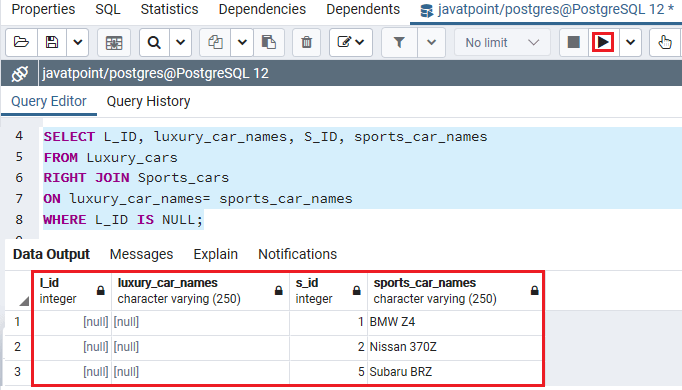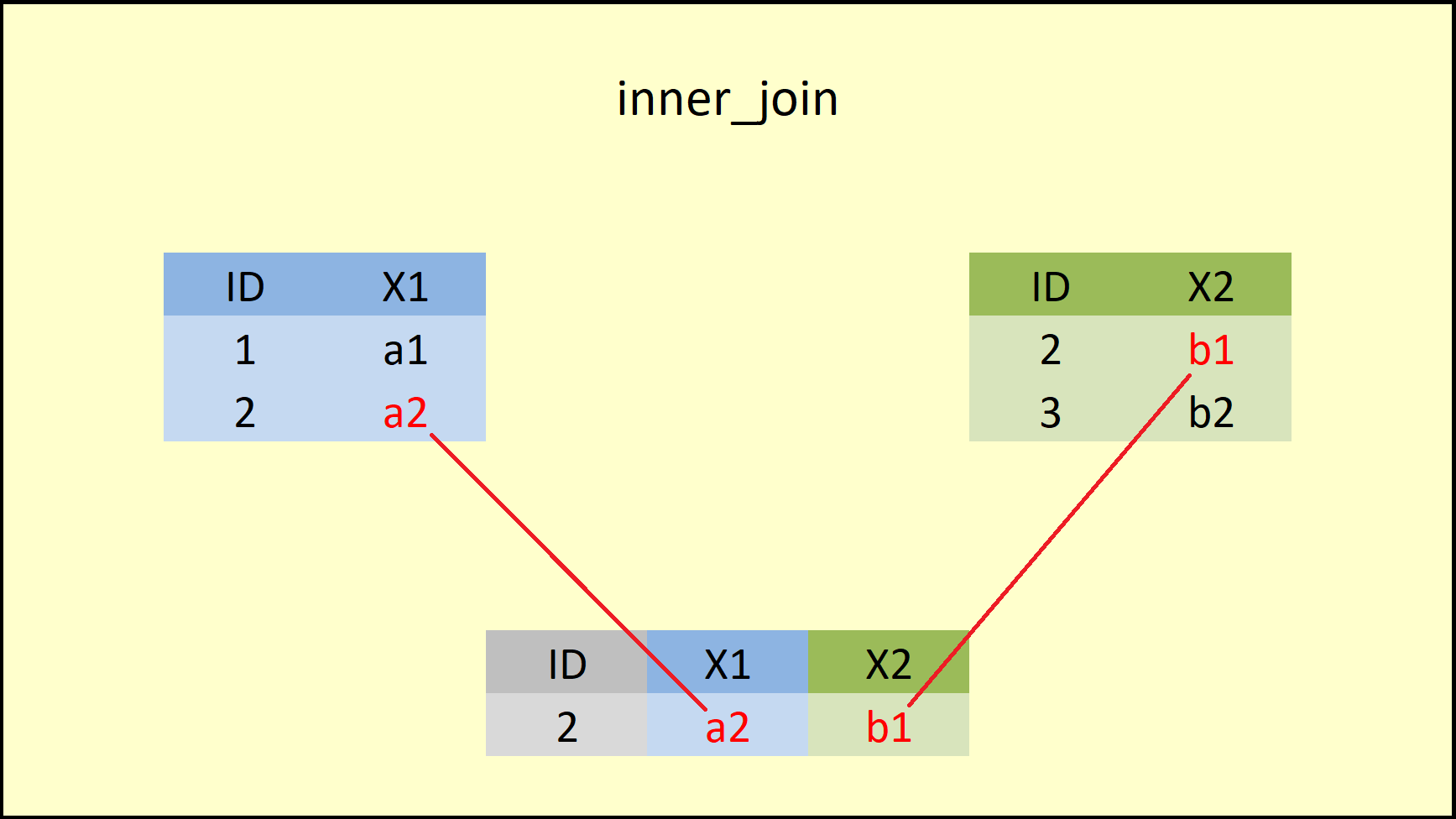

Loosely, it means that a LATERAL join is like a SQL foreach loop, in which PostgreSQL will iterate over each row in a result set and evaluate a subquery using that row as a parameter. This is repeated for each row or set of rows from the column source table(s). The resulting row(s) are joined as usual with the rows they were computed from. When a FROM item contains LATERAL cross-references, evaluation proceeds as follows: for each row of the FROM item providing the cross-referenced column(s), or set of rows of multiple FROM items providing the columns, the LATERAL item is evaluated using that row or row set’s values of the columns. (Without LATERAL, each sub- SELECT is evaluated independently and so cannot cross-reference any other FROM item.) This allows the sub- SELECT to refer to columns of FROM items that appear before it in the FROM list. The LATERAL key word can precede a sub- SELECT FROM item. The best description in the documentation comes at the bottom of the list of FROM clause options : Interested in learning more about Heap Engineering? Meet our team to get a feel for what it’s like to work at Heap! What is a LATERAL join? In this post, I’ll walk through a conversion funnel analysis that wouldn’t be possible in PostgreSQL 9.2. In other words, I want to show sum of rows of separately INNER JOIN between the base table and other tables.PostgreSQL 9.3 has a new join type! Lateral joins arrived without a lot of fanfare, but they enable some powerful new queries that were previously only tractable with procedural code. | 19 | 1542866579 | 1799477 | NULL | NULL | NULL | NULL |īut I don't want to get the rows that were not exist (NULL) in right-side tables (other 23 tables). | notif_id | da | uft_id | un | tr_n | cm_tx | av_ul | The result of that query is like this: +-+-+-+-+-+-+-+ LEFT JOIN tricks trickComment_tricks ON trickComment_id = trickComment_id LEFT JOIN users trickComment_users ON trickComment_users.u_id = trickComment_userForTricks.u_id On trickComment_userForTricks.uft_id = notif_trick_comment.uft_id LEFT JOIN user_for_tricks trickComment_userForTricks

LEFT JOIN notif_trick_comment ON notif_trick_comment.notif_id = notif_dest_user.notif_id

LEFT JOIN users like_users ON like_userForTricks.u_id = like_users.u_id LEFT JOIN tricks like_tricks ON like_id = like_id LEFT JOIN user_for_tricks like_userForTricks ON notif_trick_like.uft_id = like_userForTricks.uft_id LEFT JOIN notif_trick_like ON notif_dest_user.notif_id = notif_trick_like.notif_id LEFT JOIN notif_all ON notif_all.notif_id = notif_dest_user.notif_id My query sample: SELECT notif_dest_user.notif_id,ĬOALESCE(notif_trick_like.uft_id, notif_trick_comment.uft_id) AS uft_id,ĬOALESCE(like_users.un, trickComment_users.un) AS un,ĬOALESCE(like_n, trickComment_n) AS tr_n,ĬOALESCE(trickComment_users.av_ul,like_users.av_ul) AS av_ul But as I want to join one with another tables, I have to use LEFT JOIN. I want to JOIN a base table with another 23 tables.


 0 kommentar(er)
0 kommentar(er)
